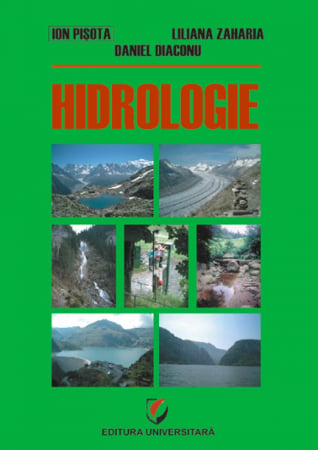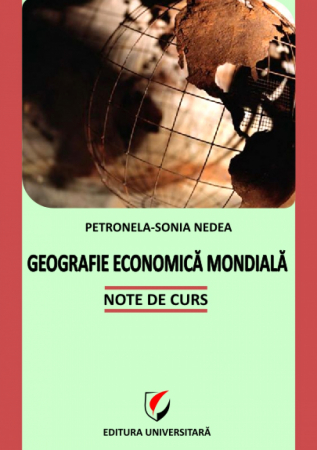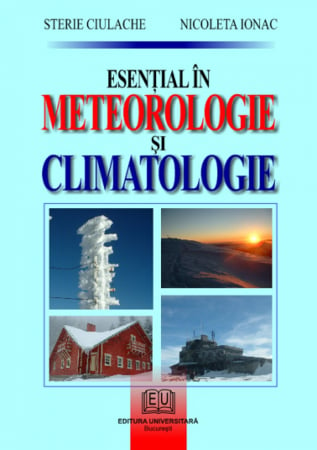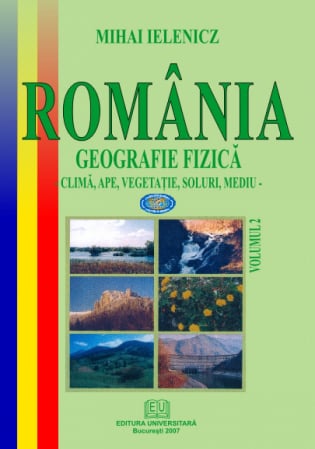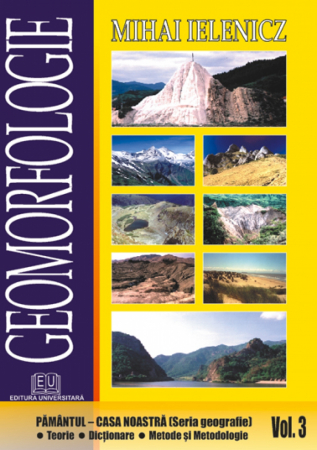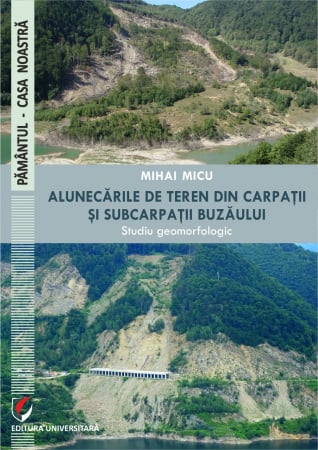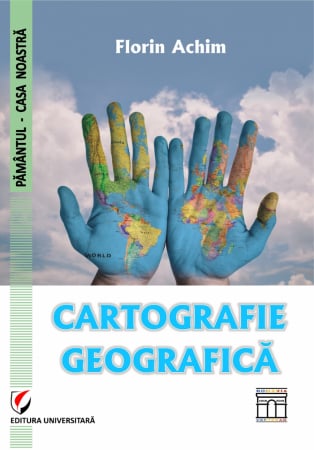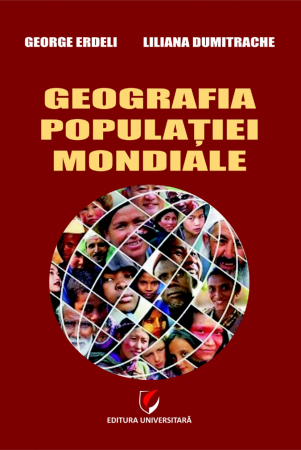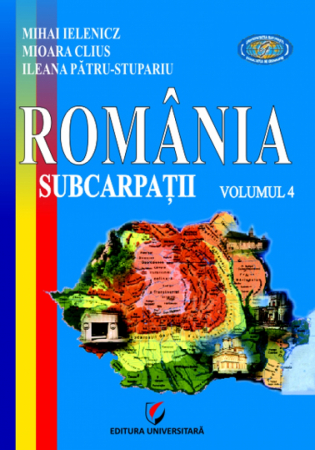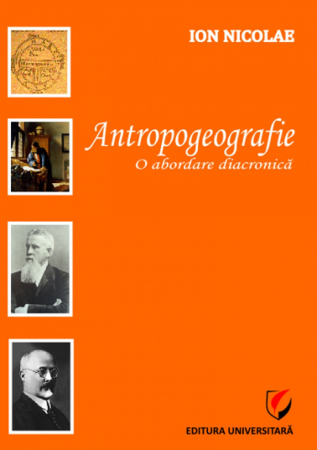Manuscript proposals: [email protected] / 0745 204 115 //// Tracking orders Individuals / Sales: 0745 200 357 / Orders Legal entities: 0721 722 783
ISBN: 978-606-591-306-6
DOI: 10.5682/9786065913066
Publisher year: 2011
Edition: I
Pages: 230
Publisher: Editura Universitară
Author: Elena Bogan, Tamara Simon, Melinda Candea
Product Code:
9786065913066
Do you need help?
0745 200 357
- Description
- Download (2)
- Authors
- Content
- More details
- Reviews (0)
The concept of human settlement synthetically expresses any form of housing, which can start from a minimum number of households, dwellings, economic units to an impressive number, giving rise to a varied typology of urban and rural settlements. These forms of housing are determined by demographic, administrative, political, geographical characteristics and each can have certain specific features.
The Dictionary of Human Geography (1999) defines settlement as the place where someone or something is, a group of dwellings, buildings that make up an environment of human life, a complex reality that can only be illustrated differently, both from a historical perspective, functions and the aspect varying in time, as well as from the spatial perspective.
Human settlement represents a human community of any rank - city or village - regardless of size or functions performed, which includes the population, buildings used for various purposes, industrial platforms, markets and streets, places of rest and leisure. Human settlements are the result of a continuous and dynamic phenomenon of humanization of natural geographical areas, determined by the requirements of human society at different stages of development.
According to the opinions of anthropologists and sociologists, the human settlement includes all the constructions and arrangements made by people in order to satisfy, in a decent way, the requirements of housing, production and recreation. Each human settlement also expresses the level of adaptability to the existing natural conditions, to the quality and quantity of exploitable resources, to the problems of demographic nature.
- population being the key factor in the emergence and development of human settlements.
The geographical approach of the problems related to the living environments brings to the forefront the way in which the geographical space has been modified in order to reach a certain way of managing and equipping the geographical spaces, for the worldwide distribution of human settlements. Any demographic phenomenon related to numerical evolution, natural movement, migration and population structure leads to changes in the spatial organization and development of human settlements, their typology, dispersion or geographical concentration.
Each human settlement comprises several subsystems: a subsystem of population, land, resources, buildings, economic activities, with its own particularities and mechanisms of action, which can interfere sequentially, but which together ensure its functionality. It is also defined by three broad categories of components - elements, structures, relationships - each with its own particularities. The elements represent the types of resources on which the settlement is based in its existence, the structures explain the presence of a diversified range of activities, profiles, urban physiognomies, while the relations are manifested mainly in political-administrative, demographic, social and economic, infrastructure.
The Dictionary of Human Geography (1999) defines settlement as the place where someone or something is, a group of dwellings, buildings that make up an environment of human life, a complex reality that can only be illustrated differently, both from a historical perspective, functions and the aspect varying in time, as well as from the spatial perspective.
Human settlement represents a human community of any rank - city or village - regardless of size or functions performed, which includes the population, buildings used for various purposes, industrial platforms, markets and streets, places of rest and leisure. Human settlements are the result of a continuous and dynamic phenomenon of humanization of natural geographical areas, determined by the requirements of human society at different stages of development.
According to the opinions of anthropologists and sociologists, the human settlement includes all the constructions and arrangements made by people in order to satisfy, in a decent way, the requirements of housing, production and recreation. Each human settlement also expresses the level of adaptability to the existing natural conditions, to the quality and quantity of exploitable resources, to the problems of demographic nature.
- population being the key factor in the emergence and development of human settlements.
The geographical approach of the problems related to the living environments brings to the forefront the way in which the geographical space has been modified in order to reach a certain way of managing and equipping the geographical spaces, for the worldwide distribution of human settlements. Any demographic phenomenon related to numerical evolution, natural movement, migration and population structure leads to changes in the spatial organization and development of human settlements, their typology, dispersion or geographical concentration.
Each human settlement comprises several subsystems: a subsystem of population, land, resources, buildings, economic activities, with its own particularities and mechanisms of action, which can interfere sequentially, but which together ensure its functionality. It is also defined by three broad categories of components - elements, structures, relationships - each with its own particularities. The elements represent the types of resources on which the settlement is based in its existence, the structures explain the presence of a diversified range of activities, profiles, urban physiognomies, while the relations are manifested mainly in political-administrative, demographic, social and economic, infrastructure.
MELINDA CANDEA
ELENA BOGAN
TAMARA SIMON
ELENA BOGAN
TAMARA SIMON
CHAPTER I. HUMAN SETTLEMENT, GEOGRAPHICAL SPACE, ORGANIZATION OF GEOGRAPHICAL SPACE. CONCEPTS, DEFINITIONS, CHARACTERISTICS / 9
1.1. The concept of human settlement, human habitat / 9
1.2. Theories of the appearance, evolution and development of human settlements / 12
1.2.1. Theories of the appearance of human settlements / 12
1.2.2. Theories of the dynamic evolution of human settlements / 13
1.2.3. Theories of human settlement development / 14
1.3. Space and time - multidisciplinary concepts / 16
1.4. Geographical area / 22
1.5. The organization of the geographical space and the arrangement of the territory / 25
1.5.1. Spatial planning, support for the realization of coherent programs for the organization of the geographical space / 27
1.5.2. Organization of the geographical space and the territory / 29
CHAPTER II. THE EVOLUTION OF HUMAN SETTLEMENTS / 33
2.1. The appearance and evolution of human settlements / 33
2.1.1. Prehistoric period / 34
2.1.2. Ancient period / 35
2.1.3. Medieval period / 37
2.1.4. Premodern period / 38
2.1.5. Contemporary period / 39
2.2. Hierarchy systems and elements of organization of human settlements / 41
CHAPTER III. URBAN SETTLEMENTS, URBAN SPACE, URBAN SPACE ORGANIZATION / 43
3.1. Urban settlements / 43
3.1.1. Concepts, characteristics / 43
3.1.2. Ways of urban development / 47
3.1.3. Generations of cities / 48
3.1.4. Territorial forms of city organization and morphostructural types of cities / 50
3.1.5. Large urban agglomerations / 55
3.1.6. Urbanization characteristics / 58
3.2. Urban space / 59
3.2.1. Nature and characteristics of urban space / 59
3.2.2. Components and structure of urban space / 60
3.3. The organization of the urban space / 64
3.3.1. Models, methods and theories used in the analysis of cities / 65
3.3.2. Basic theories regarding the internal organization of the urban space / 72
3.3.3. Urbanism and the organization of the urban space / 74
3.3.4. Functional zoning of the urban space / 77
CHAPTER IV. RURAL SETTLEMENTS, RURAL AREA, ORGANIZATION OF RURAL AREA / 80
4.1. Rural settlements / 80
4.1.1. Concepts, definitions / 80
4.1.2. Components of rural settlements / 84
4.1.3. Typology of rural settlements / 85
4.1.3 1. Types of rural settlements by demographic size / 86
4.1.3.2. Morphostructural types of rural settlements / 87
4.1.3.3. Types of villages by their site / 93
4.1.3.4. Functional typology of settlements / 94
4.1.4. Characteristics of rural settlements in continental profile / 97
4.1.5. Dispersion of rural settlements / 99
4.2. Genetic types of villages and forms of social organization in Romania / 101
4.3. Rural space - concept, characteristics, components / 106
4.3.1. The concept of rural space / 106
4.3.2. Classification of rural areas / 113
4.3.3. Methods of analysis of rural areas / 115
CHAPTER V. ORGANIZATION OF AGRICULTURAL AREA - MAIN COMPONENT OF RURAL AREA / 120
5.1. Favorable and restrictive factors in the development of agriculture and the extension of the agricultural space / 121
5.2. Agricultural space - extension, characteristics, restructuring / 124
5.3. The modalities of organization, arrangement and optimization of the agricultural space / 127
5.3.1. Spatial planning - the main tool in organizing the agricultural space / 127
5.3.2. Optimization of the restrictive components of the agricultural space through agro-pedo-hydro-amelioration works / 136
5.3.3. Organization of agricultural land / 137
5.3.4. Organization and arrangement of natural and cultivated pastures / 140
5.3.5. Organization and arrangement of land in the case of fruit and hop plantations / 141
CHAPTER VI. HUMAN SETTLEMENTS - INDUSTRY AND SPACE ORGANIZATION / 143
6.1. The concept of industrial space / 143
6.2. Factors for locating the industrial space / 145
6.3. Typology of industrial spaces / 150
6.4. New types of industrial spaces / 152
6.5. Industry and organization of geographical space / 153
6.5.1. New forms of organization of the industrial space / 154
6.5.2. Industrial unit and industrial platform - basic "cells" of the industrial space / 156
6.5.2.1. Industrial unit / 156
6.5.2.2. Industrial platform / 157
CHAPTER VII. GREEN SPACE / 159
7.1. Forest space / 159
7.1.1. The evolution of the concept of organization and arrangement of the forest fund in Romania / 161
7.1.2. Actions, arrangements and principles that define the optimal organization of the forest space / 164
7.2. Intra-urban and peri-urban green spaces. / 165
7.2.1. Concepts, characteristics / 165
7.2.2. Intraurban green spaces / 167
7.2.2.1. Urban green space systems / 168
7.2.2.2. The main types of urban green spaces / 169
7.2.2.3. Organization of urban (intraurban) green spaces / 172
7.2.2.4. Evolution and organization of urban green spaces in Romania / 174
7.2.3. Periurban green spaces / 177
CHAPTER VIII. TOURISM AND THE ORGANIZATION OF URBAN AND RURAL SPACES / 180
8.1. Spa-seaside tourist spaces / 180
8.2. Spa-thermal tourist spaces / 189
8.3. Specialized balneoclimateric tourist spaces / 191
8.4. Concepts and strategies for arranging and developing settlements for mountain tourism / 192
CHAPTER IX. PERIURBAN SPACE / 200
9.1. The concept of periurban space / 200
9.2. Periurbanization factors / 202
9.3. Delimitation of the periurban space / 204
9.4. Elements of organization of the periurban space and its functions / 206
9.4.1. Analysis of the components of the periurban space - diagnosis stage / 206
9.4.2. Functions and organization of the periurban space / 210
9.4.2.1. Creating the recreational system of the city / 210
9.4.2.2. Organization of agricultural space and zoning of agricultural production in periurban / 212
9.4.2.3. The commercial function and the organization of the “peripheral trade” 215 9.4.2.4. Organization of the settlement network / 217
9.4.2.5. Organization of peri - urban transport / 218
BIBLIOGRAPHY / 221
1.1. The concept of human settlement, human habitat / 9
1.2. Theories of the appearance, evolution and development of human settlements / 12
1.2.1. Theories of the appearance of human settlements / 12
1.2.2. Theories of the dynamic evolution of human settlements / 13
1.2.3. Theories of human settlement development / 14
1.3. Space and time - multidisciplinary concepts / 16
1.4. Geographical area / 22
1.5. The organization of the geographical space and the arrangement of the territory / 25
1.5.1. Spatial planning, support for the realization of coherent programs for the organization of the geographical space / 27
1.5.2. Organization of the geographical space and the territory / 29
CHAPTER II. THE EVOLUTION OF HUMAN SETTLEMENTS / 33
2.1. The appearance and evolution of human settlements / 33
2.1.1. Prehistoric period / 34
2.1.2. Ancient period / 35
2.1.3. Medieval period / 37
2.1.4. Premodern period / 38
2.1.5. Contemporary period / 39
2.2. Hierarchy systems and elements of organization of human settlements / 41
CHAPTER III. URBAN SETTLEMENTS, URBAN SPACE, URBAN SPACE ORGANIZATION / 43
3.1. Urban settlements / 43
3.1.1. Concepts, characteristics / 43
3.1.2. Ways of urban development / 47
3.1.3. Generations of cities / 48
3.1.4. Territorial forms of city organization and morphostructural types of cities / 50
3.1.5. Large urban agglomerations / 55
3.1.6. Urbanization characteristics / 58
3.2. Urban space / 59
3.2.1. Nature and characteristics of urban space / 59
3.2.2. Components and structure of urban space / 60
3.3. The organization of the urban space / 64
3.3.1. Models, methods and theories used in the analysis of cities / 65
3.3.2. Basic theories regarding the internal organization of the urban space / 72
3.3.3. Urbanism and the organization of the urban space / 74
3.3.4. Functional zoning of the urban space / 77
CHAPTER IV. RURAL SETTLEMENTS, RURAL AREA, ORGANIZATION OF RURAL AREA / 80
4.1. Rural settlements / 80
4.1.1. Concepts, definitions / 80
4.1.2. Components of rural settlements / 84
4.1.3. Typology of rural settlements / 85
4.1.3 1. Types of rural settlements by demographic size / 86
4.1.3.2. Morphostructural types of rural settlements / 87
4.1.3.3. Types of villages by their site / 93
4.1.3.4. Functional typology of settlements / 94
4.1.4. Characteristics of rural settlements in continental profile / 97
4.1.5. Dispersion of rural settlements / 99
4.2. Genetic types of villages and forms of social organization in Romania / 101
4.3. Rural space - concept, characteristics, components / 106
4.3.1. The concept of rural space / 106
4.3.2. Classification of rural areas / 113
4.3.3. Methods of analysis of rural areas / 115
CHAPTER V. ORGANIZATION OF AGRICULTURAL AREA - MAIN COMPONENT OF RURAL AREA / 120
5.1. Favorable and restrictive factors in the development of agriculture and the extension of the agricultural space / 121
5.2. Agricultural space - extension, characteristics, restructuring / 124
5.3. The modalities of organization, arrangement and optimization of the agricultural space / 127
5.3.1. Spatial planning - the main tool in organizing the agricultural space / 127
5.3.2. Optimization of the restrictive components of the agricultural space through agro-pedo-hydro-amelioration works / 136
5.3.3. Organization of agricultural land / 137
5.3.4. Organization and arrangement of natural and cultivated pastures / 140
5.3.5. Organization and arrangement of land in the case of fruit and hop plantations / 141
CHAPTER VI. HUMAN SETTLEMENTS - INDUSTRY AND SPACE ORGANIZATION / 143
6.1. The concept of industrial space / 143
6.2. Factors for locating the industrial space / 145
6.3. Typology of industrial spaces / 150
6.4. New types of industrial spaces / 152
6.5. Industry and organization of geographical space / 153
6.5.1. New forms of organization of the industrial space / 154
6.5.2. Industrial unit and industrial platform - basic "cells" of the industrial space / 156
6.5.2.1. Industrial unit / 156
6.5.2.2. Industrial platform / 157
CHAPTER VII. GREEN SPACE / 159
7.1. Forest space / 159
7.1.1. The evolution of the concept of organization and arrangement of the forest fund in Romania / 161
7.1.2. Actions, arrangements and principles that define the optimal organization of the forest space / 164
7.2. Intra-urban and peri-urban green spaces. / 165
7.2.1. Concepts, characteristics / 165
7.2.2. Intraurban green spaces / 167
7.2.2.1. Urban green space systems / 168
7.2.2.2. The main types of urban green spaces / 169
7.2.2.3. Organization of urban (intraurban) green spaces / 172
7.2.2.4. Evolution and organization of urban green spaces in Romania / 174
7.2.3. Periurban green spaces / 177
CHAPTER VIII. TOURISM AND THE ORGANIZATION OF URBAN AND RURAL SPACES / 180
8.1. Spa-seaside tourist spaces / 180
8.2. Spa-thermal tourist spaces / 189
8.3. Specialized balneoclimateric tourist spaces / 191
8.4. Concepts and strategies for arranging and developing settlements for mountain tourism / 192
CHAPTER IX. PERIURBAN SPACE / 200
9.1. The concept of periurban space / 200
9.2. Periurbanization factors / 202
9.3. Delimitation of the periurban space / 204
9.4. Elements of organization of the periurban space and its functions / 206
9.4.1. Analysis of the components of the periurban space - diagnosis stage / 206
9.4.2. Functions and organization of the periurban space / 210
9.4.2.1. Creating the recreational system of the city / 210
9.4.2.2. Organization of agricultural space and zoning of agricultural production in periurban / 212
9.4.2.3. The commercial function and the organization of the “peripheral trade” 215 9.4.2.4. Organization of the settlement network / 217
9.4.2.5. Organization of peri - urban transport / 218
BIBLIOGRAPHY / 221
The concept of human settlement synthetically expresses any form of housing, which can start from a minimum number of households, dwellings, economic units to an impressive number, giving rise to a varied typology of urban and rural settlements. These forms of housing are determined by demographic, administrative, political, geographical characteristics and each can have certain specific features.
The Dictionary of Human Geography (1999) defines settlement as the place where someone or something is, a group of dwellings, buildings that make up an environment of human life, a complex reality that can only be illustrated differently, both from a historical perspective, functions and the aspect varying in time, as well as from the spatial perspective.
Human settlement represents a human community of any rank - city or village - regardless of size or functions performed, which includes the population, buildings used for various purposes, industrial platforms, markets and streets, places of rest and leisure. Human settlements are the result of a continuous and dynamic phenomenon of humanization of natural geographical areas, determined by the requirements of human society at different stages of development.
According to the opinions of anthropologists and sociologists, the human settlement includes all the constructions and arrangements made by people in order to satisfy, in a decent way, the requirements of housing, production and recreation. Each human settlement also expresses the level of adaptability to the existing natural conditions, to the quality and quantity of exploitable resources, to the problems of demographic nature.
- population being the key factor in the emergence and development of human settlements.
The geographical approach of the problems related to the living environments brings to the forefront the way in which the geographical space has been modified in order to reach a certain way of managing and equipping the geographical spaces, for the worldwide distribution of human settlements. Any demographic phenomenon related to numerical evolution, natural movement, migration and population structure leads to changes in the spatial organization and development of human settlements, their typology, dispersion or geographical concentration.
Each human settlement comprises several subsystems: a subsystem of population, land, resources, buildings, economic activities, with its own particularities and mechanisms of action, which can interfere sequentially, but which together ensure its functionality. It is also defined by three broad categories of components - elements, structures, relationships - each with its own particularities. The elements represent the types of resources on which the settlement is based in its existence, the structures explain the presence of a diversified range of activities, profiles, urban physiognomies, while the relations are manifested mainly in political-administrative, demographic, social and economic, infrastructure.
The appearance and evolution of any human settlement is given by the capitalization of the existing natural resources, by the satisfaction of the living and working requirements, by the cultural and religious identity. According to the specifics and weight of the dominant economic activities, according to the demographic size, the structure of the built fund, the equipment with the infrastructure, the human communities are presented in two main forms of spatial organization:
The village (rural settlement) - the oldest form of human habitation, having certain historical, ethnographic, economic, social, urban characteristics;
The city (urban settlement) - defined by Fr. Ratzel through the existence of three basic elements: the number of inhabitants, the dominant professional activities, the greater concentration of housing. Each has a multitude of forms of manifestation, as a result of the great qualitative and quantitative diversity of the conditions of the natural and anthropic environment.
The term habitat defines, in a general sense, a geographical space determined by the natural conditions in which an individual, a social group, a human community takes shelter and can normally carry out its activities essential for life. The human habitat represents the arranged territory in which the vital activities, economic and social, of the human being take place. It exceeds the limits of the buildable perimeter of the localities, including important surfaces where work, recreation or circulation activities take place, located outside it (Dictionary of Human Geography, 1999).
Geographical and urban research conducted in time and space highlights the existence of two categories of social living environments: urban and rural habitat. These two forms of human habitat have several fundamental elements, which express their direct relationship with the geographical environment in which they appeared and developed:
- the inhabited geographical space - also called hearth or urban - designates, in general, the territory that any human settlement has, which may or may not have continuity for the historical stages;
- population (viewed in dynamics and its structure) - through the demographic characteristics registered in time and space it contributed to the development of any type of human settlement;
- economic and social activities - which take place in a well-defined geographical area, called estate or out-of-town, which has a wide range of natural and anthropic resources, meant to serve inhabited areas, allowing in time their extension;
- circulating components - elements in continuous running, under the aspect of continuous circuits, which ensure the good functioning of human settlements; all financial resources can be integrated here; means of transportation; all types of energy used - electric, thermal, alternative; most public and private services, etc.
The presentation and analysis of the two types of habitat can be done in different ways:
- descriptive manner - focused on a simple presentation of the physiognomy and structure of human settlements, through what can be deduced from the field, or from photographic images, video, satellite, cartographic materials;
- explanatory manner - is based on explaining the causes, the influencing factors that underlie the appearance, development of settlements and that argue the presence of functions in relation to their spatial distribution; by detailed explanations can be understood the phenomena of ascending evolution or involution of some settlements;
- interpretive manner - aims to analyze in more detail the direct and indirect relationships between natural and anthropogenic components, their mutual influences, allows the development of medium and long term forecasts; in this context, analogies can be made between the appearance and development of many settlements about which we do not have sufficient archaeological, historical, economic, cultural data;
- holistic manner - by which the general presentation of human settlements is made from the perspective of the idea that their system of functioning and evolution has a direct influence on the component parts; thus, the interpretation is done in an integrated way and not for each component separately. This method is mostly used in the analysis of geographical phenomena, because it offers a much more complete view of them.
There is a complex of interactions between urban and rural habitat. Thus, the consolidation of the specific characteristics of the urban environment, at the level of many human settlements, generated the urbanization phenomenon. Gradually, the need for spatial expansion, economic and demographic development determined the phenomenon of suburbanization. In this context, the city is gaining more and more from the neighboring rural areas, which it gradually incorporates in its structure.
Also, the appearance around large urban agglomerations of small towns, which would take over some of the economic and social functions of the big city, led to the emergence of the phenomenon of periurbanization. In large urban agglomerations, the process of demographic, social, economic revitalization of old historic centers, by granting new economic, cultural, tourist functions and by replacing the elderly population, with low incomes, by another, younger and with significant incomes , led to the emergence of the phenomenon of urban gentrification.
Political and economic changes in European countries that held socialist economies led to important changes in the network of urban and rural settlements. In this sense, it is found that many mono-industrial cities, with the status of disadvantaged localities, tend to return to the condition of rural settlement, especially if the transition to the category of cities was made on the basis of political and administrative decisions. Thus, the phenomenon of deurbanization, of rururbanization is outlined.
In the conditions in which the administration and management of rural and urban spaces register negative aspects, functional ruptures often appear. These are manifested especially in the case of urban settlements and can take place at the macrostructural and microstructural level, in direct relation with the spatial and functional dimensions. They can appear at territorial level, through the way of alternating the functional areas, but also through great environmental and architectural contrasts, which destroy the individuality and uniqueness of the settlement.
The Dictionary of Human Geography (1999) defines settlement as the place where someone or something is, a group of dwellings, buildings that make up an environment of human life, a complex reality that can only be illustrated differently, both from a historical perspective, functions and the aspect varying in time, as well as from the spatial perspective.
Human settlement represents a human community of any rank - city or village - regardless of size or functions performed, which includes the population, buildings used for various purposes, industrial platforms, markets and streets, places of rest and leisure. Human settlements are the result of a continuous and dynamic phenomenon of humanization of natural geographical areas, determined by the requirements of human society at different stages of development.
According to the opinions of anthropologists and sociologists, the human settlement includes all the constructions and arrangements made by people in order to satisfy, in a decent way, the requirements of housing, production and recreation. Each human settlement also expresses the level of adaptability to the existing natural conditions, to the quality and quantity of exploitable resources, to the problems of demographic nature.
- population being the key factor in the emergence and development of human settlements.
The geographical approach of the problems related to the living environments brings to the forefront the way in which the geographical space has been modified in order to reach a certain way of managing and equipping the geographical spaces, for the worldwide distribution of human settlements. Any demographic phenomenon related to numerical evolution, natural movement, migration and population structure leads to changes in the spatial organization and development of human settlements, their typology, dispersion or geographical concentration.
Each human settlement comprises several subsystems: a subsystem of population, land, resources, buildings, economic activities, with its own particularities and mechanisms of action, which can interfere sequentially, but which together ensure its functionality. It is also defined by three broad categories of components - elements, structures, relationships - each with its own particularities. The elements represent the types of resources on which the settlement is based in its existence, the structures explain the presence of a diversified range of activities, profiles, urban physiognomies, while the relations are manifested mainly in political-administrative, demographic, social and economic, infrastructure.
The appearance and evolution of any human settlement is given by the capitalization of the existing natural resources, by the satisfaction of the living and working requirements, by the cultural and religious identity. According to the specifics and weight of the dominant economic activities, according to the demographic size, the structure of the built fund, the equipment with the infrastructure, the human communities are presented in two main forms of spatial organization:
The village (rural settlement) - the oldest form of human habitation, having certain historical, ethnographic, economic, social, urban characteristics;
The city (urban settlement) - defined by Fr. Ratzel through the existence of three basic elements: the number of inhabitants, the dominant professional activities, the greater concentration of housing. Each has a multitude of forms of manifestation, as a result of the great qualitative and quantitative diversity of the conditions of the natural and anthropic environment.
The term habitat defines, in a general sense, a geographical space determined by the natural conditions in which an individual, a social group, a human community takes shelter and can normally carry out its activities essential for life. The human habitat represents the arranged territory in which the vital activities, economic and social, of the human being take place. It exceeds the limits of the buildable perimeter of the localities, including important surfaces where work, recreation or circulation activities take place, located outside it (Dictionary of Human Geography, 1999).
Geographical and urban research conducted in time and space highlights the existence of two categories of social living environments: urban and rural habitat. These two forms of human habitat have several fundamental elements, which express their direct relationship with the geographical environment in which they appeared and developed:
- the inhabited geographical space - also called hearth or urban - designates, in general, the territory that any human settlement has, which may or may not have continuity for the historical stages;
- population (viewed in dynamics and its structure) - through the demographic characteristics registered in time and space it contributed to the development of any type of human settlement;
- economic and social activities - which take place in a well-defined geographical area, called estate or out-of-town, which has a wide range of natural and anthropic resources, meant to serve inhabited areas, allowing in time their extension;
- circulating components - elements in continuous running, under the aspect of continuous circuits, which ensure the good functioning of human settlements; all financial resources can be integrated here; means of transportation; all types of energy used - electric, thermal, alternative; most public and private services, etc.
The presentation and analysis of the two types of habitat can be done in different ways:
- descriptive manner - focused on a simple presentation of the physiognomy and structure of human settlements, through what can be deduced from the field, or from photographic images, video, satellite, cartographic materials;
- explanatory manner - is based on explaining the causes, the influencing factors that underlie the appearance, development of settlements and that argue the presence of functions in relation to their spatial distribution; by detailed explanations can be understood the phenomena of ascending evolution or involution of some settlements;
- interpretive manner - aims to analyze in more detail the direct and indirect relationships between natural and anthropogenic components, their mutual influences, allows the development of medium and long term forecasts; in this context, analogies can be made between the appearance and development of many settlements about which we do not have sufficient archaeological, historical, economic, cultural data;
- holistic manner - by which the general presentation of human settlements is made from the perspective of the idea that their system of functioning and evolution has a direct influence on the component parts; thus, the interpretation is done in an integrated way and not for each component separately. This method is mostly used in the analysis of geographical phenomena, because it offers a much more complete view of them.
There is a complex of interactions between urban and rural habitat. Thus, the consolidation of the specific characteristics of the urban environment, at the level of many human settlements, generated the urbanization phenomenon. Gradually, the need for spatial expansion, economic and demographic development determined the phenomenon of suburbanization. In this context, the city is gaining more and more from the neighboring rural areas, which it gradually incorporates in its structure.
Also, the appearance around large urban agglomerations of small towns, which would take over some of the economic and social functions of the big city, led to the emergence of the phenomenon of periurbanization. In large urban agglomerations, the process of demographic, social, economic revitalization of old historic centers, by granting new economic, cultural, tourist functions and by replacing the elderly population, with low incomes, by another, younger and with significant incomes , led to the emergence of the phenomenon of urban gentrification.
Political and economic changes in European countries that held socialist economies led to important changes in the network of urban and rural settlements. In this sense, it is found that many mono-industrial cities, with the status of disadvantaged localities, tend to return to the condition of rural settlement, especially if the transition to the category of cities was made on the basis of political and administrative decisions. Thus, the phenomenon of deurbanization, of rururbanization is outlined.
In the conditions in which the administration and management of rural and urban spaces register negative aspects, functional ruptures often appear. These are manifested especially in the case of urban settlements and can take place at the macrostructural and microstructural level, in direct relation with the spatial and functional dimensions. They can appear at territorial level, through the way of alternating the functional areas, but also through great environmental and architectural contrasts, which destroy the individuality and uniqueness of the settlement.
If you want to express your opinion about this product you can add a review.
write a review

6359.png)
![Human Settlements and Organizing Geographic Space [1] Human Settlements and Organizing Geographic Space [1]](https://gomagcdn.ro/domains/editurauniversitara.ro/files/product/large/asezarile-umane-si-organizarea-spatiului-geografic-1801-249820.jpg)
